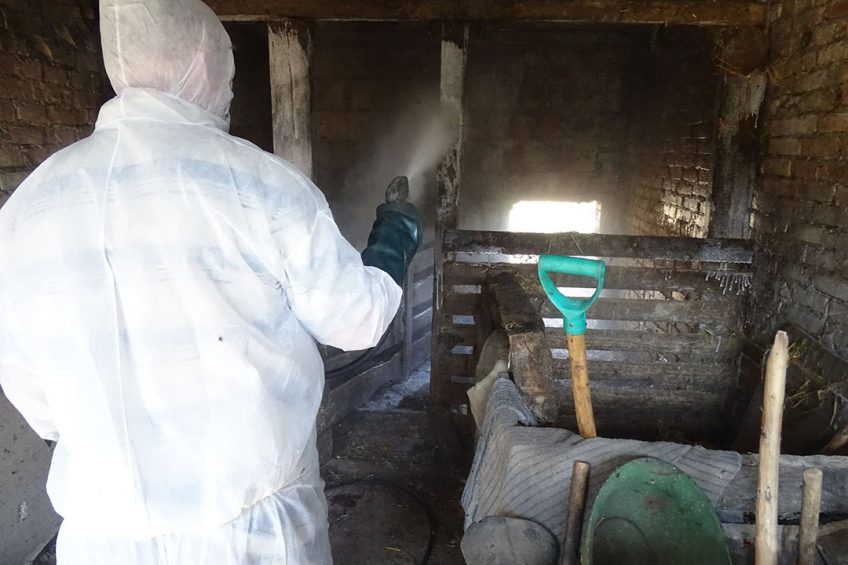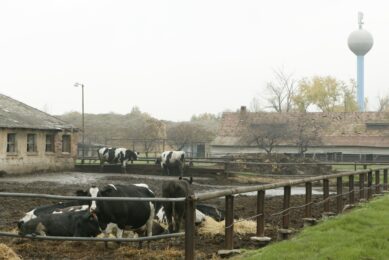ASF: First outbreak on backyard farm in western Poland

For the first time, a backyard farm in western Poland has tested positive for African Swine Fever (ASF). It was found on a farm near the village of Ratowice, Leszno county, in the province of Greater Poland.
An update by the Polish Central Veterinary Inspectorate (CVI) reported that the farm had 24 pigs in total. The positive cases were confirmed on June 15 by the National Veterinary Institute – National Research Institute in Puławy. The village is located at 21 km east of the closest known cases of ASF in wild boar and at about 125 km as the crow flies from the border with Germany.
4th case of ASF on a farm in 2020
All in all, this is the 4th case of ASF on a farm in the whole of Poland in 2020. Earlier this year, 2 commercial farms in western Poland were infected, as well as a smaller farm in the east, close to the border with Belarus. With the commercial farm outbreaks, it was immediately possible to track and trace which contacts had been happening, in case of backyard farms, the ways of contact could be more diffuse.
The Polish agricultural title Farmer.pl also spoke to Prof Grzegorz Woźniakowski from the National Veterinary Institute. He confirmed that the ASF strain was identical to that being prevalent in wild boar nearby. He also stressed that yesterday, no samples from other farms were waiting for examination.
The article on the website also mentioned that Leszno county is an important area for swine production. The county itself would be home to roughly 150,000 pigs.
241 farms hit by ASF
In total, now 241 farms have been hit by ASF since the virus first entered Poland in 2014. Until last year, all of those farms were located in eastern Poland. Until late 2019, the virus mainly stayed around in the eastern provinces until it popped up in a separate zone in the west of the country, much closer to the German border.
ASF figures in western Poland over May and June
Against the background of this news, it is remarkable that in May 2020 substantially fewer ASF outbreaks in wild boar in western Poland were reported than in the months prior. That becomes clear on the basis of an analysis of figures.
Ever since a separate cluster in western Poland has existed since November 2019, 3 provinces reported outbreaks: Lubusz, Greater Poland and Lower Silesia. On the basis of data reported by the Polish CVI and the World Organization for Animal Health (OIE), Pig Progress has consistently tracked these outbreaks, as they are in the relative vicinity of pork powerhouse Germany, (see table). The wild boar were found in an area measuring 100 km east to west and 69 km north to south.
Near German border
The vast majority of these animals, about 75%, were found in Lubusz province. This province borders the German states of Brandenburg and Saxony. The closest an infected wild boar has come to the German border is just over 10 km. Greater Poland is the province with the most pig production of Poland. 2 out of the 3 infected swine farms were located in this province. Lower Silesia, south of Lubusz, also borders the German state Saxony. It only has a handful of outbreaks.
Spikes between January and April
In terms of time, outbreak reports spiked between January and April, when every month around 300 or more dead wild boar were found and reported. February was the most intensive month, with 444 animals found positive. In that context, May presents a different picture, as so far, ‘just’ 106 dead wild boar were found and reported from Western Poland.
Explanation for relatively low amount
How to explain this relatively low amount? Is the virus receding or has reporting been less intensive over the last few weeks? The conclusion that the virus is disappearing might be a little premature. In eastern Poland, the virus has managed to keep going since 2014 and up until today, new cases are reported frequently. In addition, outbreaks appear to be more frequent in summer months, possibly caused by young wild boar having been born.

Passive surveillance for carcasses
Then, what might be the explanation for the lower amount of reports? One explanation could be connected to Covid-19. Passive surveillance for carcasses was simply more difficult as Poland also went into a lockdown. The risk of that policy was clearly expressed by Prof Thomas Mettenleiter of the German Friedrich-Loeffler-Institut late April: “ASF is a notifiable animal disease that must be combated quickly with all necessary measures if it occurs in Germany, regardless of the current pandemic with SARS-CoV-2.”
Pig Progress reached out to the Polish veterinary authorities for a reflection on these figures, but so far has not been able to receive a reply.











